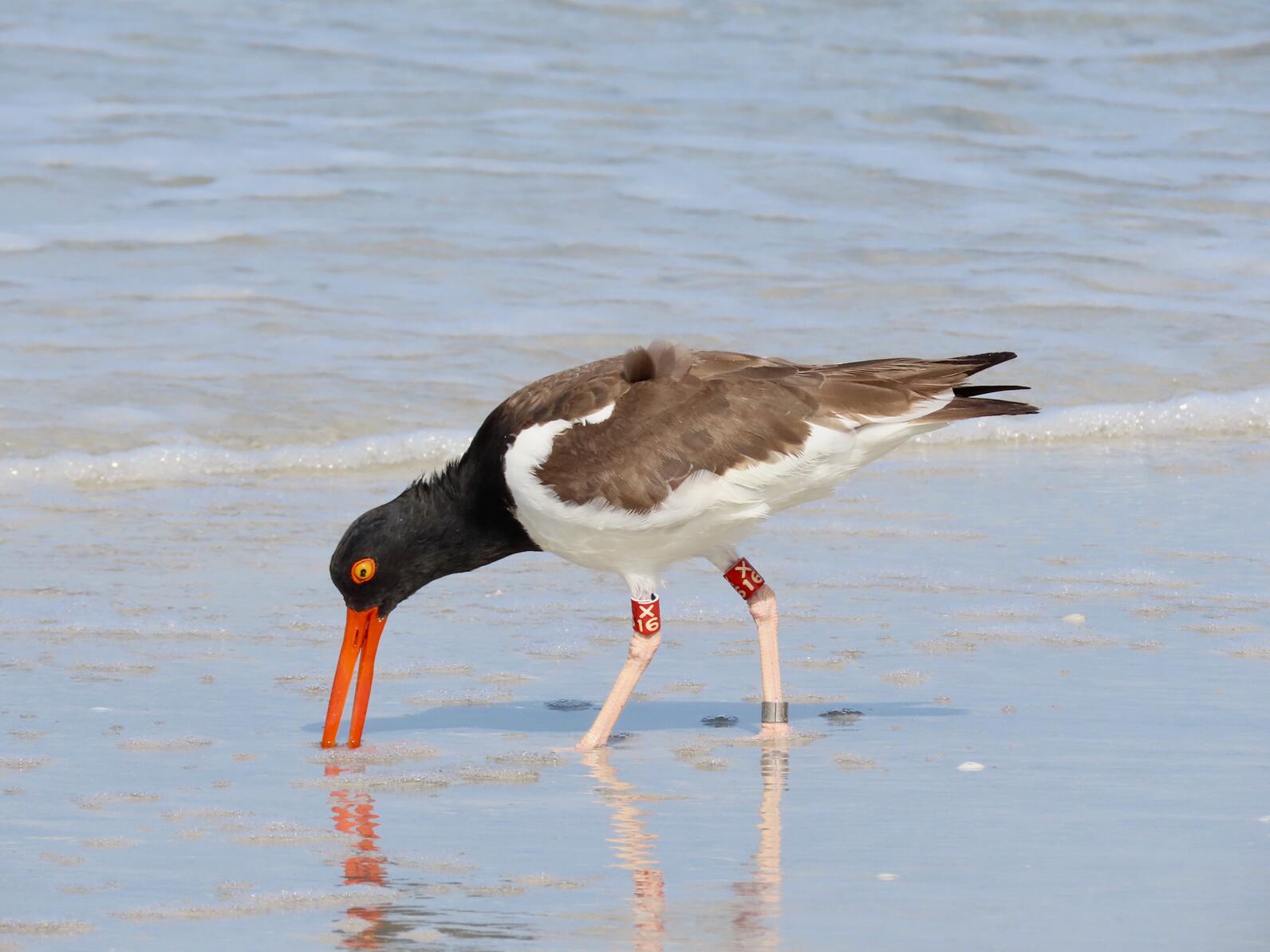In a boon for conservation research, Audubon staff and volunteers confirmed that an American Oystercatcher that hatched along the Tolomato River successfully nested on a rooftop as an adult. The movements of this banded bird confirm that oystercatchers use different habitats throughout their life cycle. To conserve this vulnerable native species, we must protect both natural and rooftop nesting habitats.
Longtime Audubon Florida volunteer Therese Eby monitors a rooftop not far from her home near Madeira Beach. This particular rooftop has hosted a nesting American Oystercatcher, and we know that the female returned for the second year in a row because she sports leg bands from when researchers banded her as a chick just north of St. Augustine along the Tolomato River in June of 2017. The bands—on the upper portion of the bird’s legs—are red and read X16.
After fledging from her riverbank site that year, she was first resighted on Outback Key in Pinellas County. For several years band resights confirmed she bounced around Pinellas County and was once resighted in the Fort Myers area. It wasn’t until 2022 that Audubon Rooftop Biologist Kara Cook discovered her nesting on a building in Pinellas County. Confirming her band number proved to be difficult. Kara patiently waited for the bird to approach a mounted trail camera in order to capture a photo clear enough to read the bands' letter and digit combination.

As rooftop nesting is wrapping up for the season, staff and volunteers work diligently to confirm chicks have become flight-capable, also known as fledges. Audubon volunteer Therese alerted Kara when she saw a fledge fed by its parents on the beach across from an active nesting rooftop. Sure enough, X16 and her mate busily foraged to feed their hungry fledge.
The successful nesting season for X16 and her mate showcases that oystercatchers can be versatile in their nesting habitat. Hatched along a riverbank, X16 managed to raise chicks on a rooftop.
American Oystercatcher X16 with mate and chick foraging on the beach.
Banded Birds: See Something, Say Something!
Bird banding is like scientists putting a note in a bottle and tossing it back into the sea of migration. The note only gives us information if someone observes and reports it when the bottle arrives on a far-off shore! Because of your efforts, we can learn more about the movements, populations, and breeding success of our banded species.
If you see a banded bird:
• Note date, time, & location — with GPS if possible
• Note the species
• Note which leg or legs have bands
• Note the color and order of bands — upper or lower. If the band or flag has an alphanumeric code, try to note the code
• Take a picture! Digital cameras work great through scopes or binoculars and sometimes enable eagle-eyed biologists to record numbers off of the band.
For information on how to report birds of all different species visit: FL.Audubon.org/birds/banded-birds.




